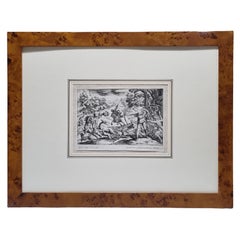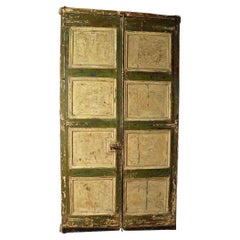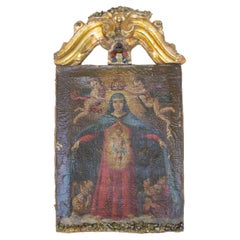European Decorative Art
18th Century Louis XVI Antique European Decorative Art
Wood, Oak
17th Century Baroque Antique European Decorative Art
Paper
Mid-18th Century Antique European Decorative Art
Wood
17th Century Rococo Antique European Decorative Art
Rock Crystal, Gold Leaf
15th Century and Earlier Medieval Antique European Decorative Art
Wood, Parchment Paper
17th Century Baroque Antique European Decorative Art
Paper
Late 18th Century Empire Antique European Decorative Art
Mirror, Giltwood
18th Century Baroque Antique European Decorative Art
Terracotta
Late 18th Century Empire Antique European Decorative Art
Mirror, Giltwood, Pine
17th Century Baroque Antique European Decorative Art
Paper
18th Century Antique European Decorative Art
Tapestry, Wood
15th Century and Earlier Gothic Antique European Decorative Art
Parchment Paper
17th Century Renaissance Antique European Decorative Art
Canvas, Wood
17th Century Antique European Decorative Art
Canvas
Mid-18th Century Georgian Antique European Decorative Art
Paper
Late 18th Century Gustavian Antique European Decorative Art
Mirror, Pine, Giltwood
18th Century Other Antique European Decorative Art
Canvas
17th Century Baroque Antique European Decorative Art
Paper
Late 18th Century Louis XVI Antique European Decorative Art
Mirror, Giltwood
17th Century Renaissance Antique European Decorative Art
Gesso, Canvas, Giltwood
17th Century Louis XIV Antique European Decorative Art
Iron
Late 17th Century International Style Antique European Decorative Art
Canvas, Wood
Late 18th Century Louis XVI Antique European Decorative Art
Giltwood
1790s Antique European Decorative Art
Glass
18th Century Arts and Crafts Antique European Decorative Art
Ceramic
Mid-18th Century Antique European Decorative Art
Chestnut
17th Century Antique European Decorative Art
Paint
Late 18th Century Georgian Antique European Decorative Art
Delft
17th Century Baroque Antique European Decorative Art
Canvas, Giltwood
17th Century Antique European Decorative Art
Canvas
17th Century Antique European Decorative Art
Canvas
Late 18th Century Empire Antique European Decorative Art
Giltwood
18th Century Antique European Decorative Art
Alabaster
18th Century Gustavian Antique European Decorative Art
Glass, Giltwood, Mirror
18th Century Antique European Decorative Art
Wood
18th Century Rococo Antique European Decorative Art
Rock Crystal, Gold Leaf
17th Century Dutch Colonial Antique European Decorative Art
Ceramic
18th Century Antique European Decorative Art
Wood
17th Century Antique European Decorative Art
Canvas
Mid-18th Century Folk Art Antique European Decorative Art
Other
17th Century Baroque Antique European Decorative Art
Paper
17th Century Baroque Antique European Decorative Art
Bronze, Other
18th Century Antique European Decorative Art
Ceramic
Mid-17th Century Antique European Decorative Art
Steel
18th Century Louis XIV Antique European Decorative Art
Pewter
18th Century and Earlier Antique European Decorative Art
Wood
18th Century Antique European Decorative Art
Alabaster, Gold
18th Century Renaissance Antique European Decorative Art
Brass
18th Century Antique European Decorative Art
Alabaster, Gold
18th Century Antique European Decorative Art
Alabaster, Gold
Late 18th Century Antique European Decorative Art
Iron, Tin
1790s Country Antique European Decorative Art
Faience
18th Century Antique European Decorative Art
Wood, Paper
17th Century Neoclassical Antique European Decorative Art
Paper
1710s Grand Tour Antique European Decorative Art
Wood, Paper
Early 17th Century Antique European Decorative Art
Ceramic
18th Century Baroque Antique European Decorative Art
Canvas, Wood
17th Century Baroque Antique European Decorative Art
Other
Read More
At Colonial Williamsburg, Everything Old Is New Again
With the help of a new director, the Virginia institution's folk art and decorative arts museums are undergoing extensive upgrades.
New York’s Hirschl & Adler Showcases the American Workmanship and Design Panache of Neoclassical Treasures
The gallery's latest exhibition proves that museum-quality pieces entice and inspire, whether in traditional or more modern interiors.





